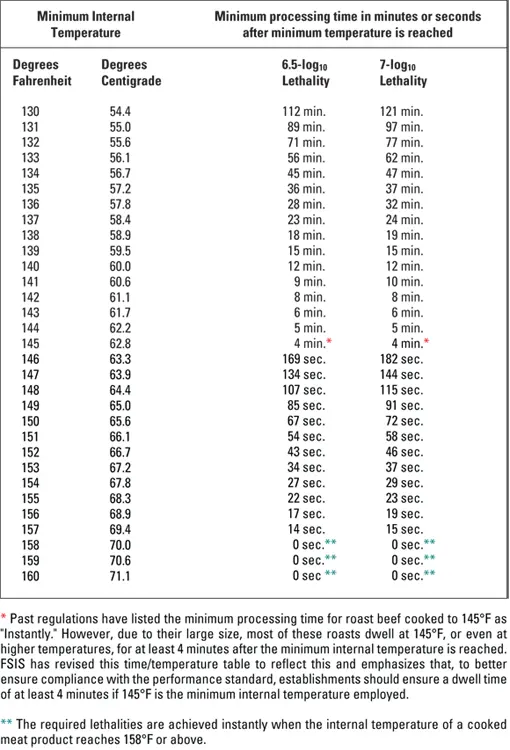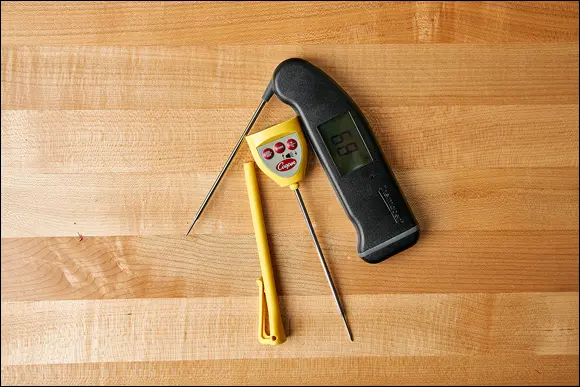FIGURE 2-3:‘Clean and Sanitize’ prep list.
 You should also create a checklist that you can use when you’re finished in the kitchen. This is a good way to make sure everything is properly cleaned and sanitized before you put it away.
You should also create a checklist that you can use when you’re finished in the kitchen. This is a good way to make sure everything is properly cleaned and sanitized before you put it away.
Protecting Against Pathogens of Concern
Proper procedures for hygiene and workspace sanitation, if done correctly, will prevent you from contaminating the meats that you are working with. However, you also need to be aware of pathogens that are commonly found in the different animal species that you may be working with. Over the last several decades, the U.S. Department of Agriculture (USDA) and the Food Safety and Inspection Service (FSIS) have done a lot of work with farmers, food processors, food scientists, and research organizations like universities, to improve and enhance food safety guidelines to help reduce foodborne illnesses. That said, food safety ultimately requires proper handling of food once you bring it home.
Common interventions to control or kill bacteria
Numerous types of bacteria are found in all living creatures, and can cause food spoilage or even severe illness. The chances of you coming into contact with these naughty bacteria will be much lower if you have a basic understanding of how to control the growth of bacteria and how to properly kill them through interventions while you’re processing meat. Common interventions include
Salting
Adding nitrites and nitrates
Acidifying to lower pH
Drying to lower water activity ( a w )
Raw sausages that require a cooking step before consumption require very little intervention because heat treating by cooking, when done correctly, will kill all bacteria.
The FSIS has published a document known as Appendix A — Compliance Guidelines For Meeting Lethality Performance Standards For Certain Meat And Poultry Products . This document contains guidelines that are used by most, if not all, food processors in America. The table from the appendix is shown in Figure 2-4 and lists the temperature, and associated amount of time that a product must be held at that temperature, required to be lethal to all bacteria.

Source: FSIS
FIGURE 2-4:Time and temperature table from FSIS Appendix A .
An important factor in controlling the growth of bacteria is proper temperature control. Did your parents ever yell at you to shut the fridge door? My folks did. Probably more so because it caused the fridge to run and use up electricity. But the reality is that spoilage of food happens more quickly at warmer temperatures. That’s because bacteria like to grow when the conditions are warmer.
When processing meat, you want to keep your proteins as cold as possible throughout the process. This will result in a higher-quality product, as well as a safer product. When you are storing meat for processing, you want to store it as close to the freezing point as possible without freezing it. When processing, you want to keep your meat mixtures cold, but this can be difficult when cutting, grinding, stuffing, and so on because of the time the meat is out of refrigeration, coupled with the added friction that comes with grinding and stuffing.
Several years ago, Dr. Bruce Tompkin presented the results of a study, titled “The significance of time-temperature to growth of foodborne pathogens during refrigeration at 40–50°F.” These results showed that you can safely process pork, chicken, and beef at temperatures above 60 degrees Fahrenheit and still be safe. However, it isn’t ideal for producing a quality product. So, to be safe and to ensure the best results, you should use a digital temperature probe such as the one shown in Figure 2-5.

Photo by David Pluimer
FIGURE 2-5:Temperature probe.
 When you start handling meat, take the temperature of the meat and jot it down. When you are done working with the meat, record the temperature and the time again. Be sure to keep the temperature below 45 degrees Fahrenheit at all times.
When you start handling meat, take the temperature of the meat and jot it down. When you are done working with the meat, record the temperature and the time again. Be sure to keep the temperature below 45 degrees Fahrenheit at all times.
Food poisoning is nasty and can be scary. The best way to have confidence in the work you are doing is to know the risks, call them by name, and understand the best way to manage the risks. There are a handful of bacteria that can be present in different types of proteins, and there are a handful of ways to mitigate the risk of these bacteria. In the case of raw sausages that require a cook step prior to consumption, cooking will be your final line of defense. A good understanding of each pathogen of concern and its respective Achilles heal will help build confidence in your processes and ultimately help you stay safe!
Salmonella is probably the most commonly known bacteria simply because of its prevalence in undercooked chicken. This is why even to this day, a well-cooked piece of chicken is heated to 160 degrees Fahrenheit. This can give it the consistency of rubber if done too well, but, hey, better safe than sorry. Salmonella is a concern in poultry and to a lesser extent in pork. Salmonella can be controlled by lowering the meat’s pH (acidifying). Cooking to 160 degrees Fahrenheit will also kill it.
Staphylococcus , or Staph, may exist on the surface of some meat and poultry, but it is largely introduced into food through human contact. It can be controlled through acidification. A cooking step will also kill it. Your best tools in combatting it are proper hygiene, and cleaning and sanitation of your work area before, during, and after food contact.
Campylobacter is found in both poultry and pork, though less commonly in the latter. It is controlled by temperature, drying, and acidification.
Listeria monocytogenes is commonly found in ready-to-eat food products. It can make healthy people feel like they have the flu, but it can also cause meningitis or even be terminal in elderly people, infants, and pregnant women. This particular bacteria is pretty tough to beat. Your best bet at home is to be thorough with your sanitation.
Clostridium botulinum and C. perfringens
I learned about botulism at a very young age, grocery shopping with my father. It almost became a game where I would look for the cans that had swollen tops. Those were the ones that you knew were bad. I would then turn them in to the customer service desk and feel like a super hero. Botulism is a pretty serious disease caused by the C. botulinum toxin. This toxin thrives in low- to no-oxygen environments (think vacuum bags, smokers, and the inside of a sausage). You can control it with sodium nitrite and acidification (by lowering the pH).
There are numerous types of Escherichi coli ( E. coli ) in the world. The big, bad one that causes recalls of food 100 percent of the time is a specific strain of E. coli referred to as O157:H7. This is the stuff that will cause serious illness and potentially death if not treated immediately. E. coli is generally an issue only for beef. Cows, when processed under USDA inspection, undergo prevention measures for O157 to ensure it is not spread if it is present. That said, if you decide to work with beef to make a sausage or an air-dried beef product like bresaola, you may want to take a preventative measure of your own to further ensure you don’t spread it.
Читать дальше

 You should also create a checklist that you can use when you’re finished in the kitchen. This is a good way to make sure everything is properly cleaned and sanitized before you put it away.
You should also create a checklist that you can use when you’re finished in the kitchen. This is a good way to make sure everything is properly cleaned and sanitized before you put it away.












